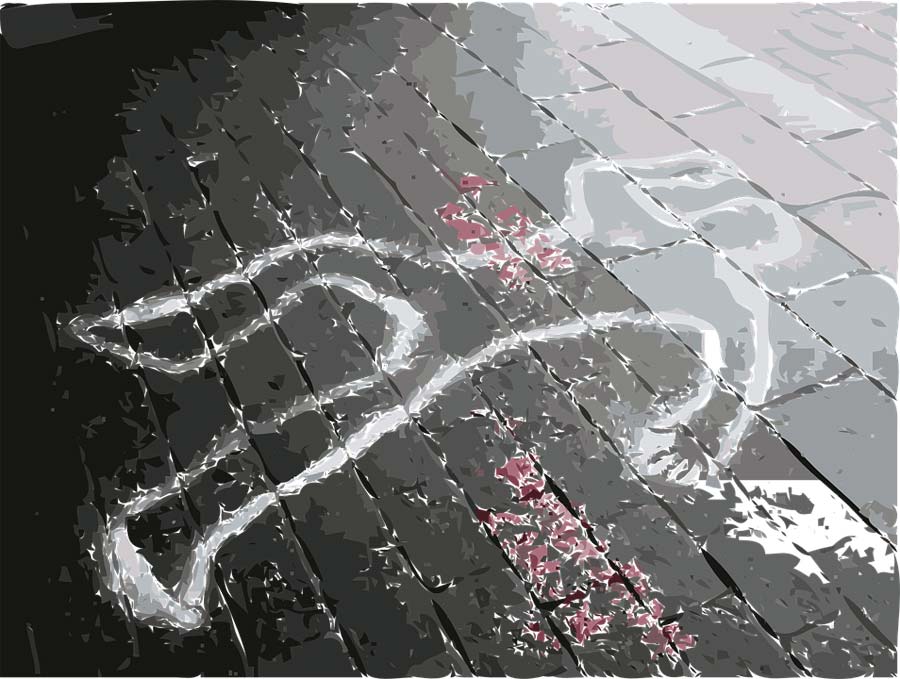
This week, the U.S. Court of Appeals for the 5th Circuit released an opinion in Dean v. Phatak, a case involving testimony from a medical examiner in a trial over a crime that turned out not to be a crime at all.
Here's the background: Noel Dean was arrested and charged with shooting and killing his wife, Shannon Dean, in 2007. Noel Dean claimed that Shannon Dean shot herself as he watched. He noted her previous suicide attempts as well as notes in which she had contemplated suicide. The autopsy on Shannon Dean was done by medical examiner Darshan Phatak. Based on very little, Phatak ruled Shannon Dean's death a homicide. He said in depositions that he did so after watching video of a police interrogation with Noel Dean in which Noel Dean claimed that his wife was holding the gun to the right side of her head, with the handle pointing toward the floor. Phatak claimed to have found evidence that the handle of the gun was actually pointed upward, toward the ceiling. He first said his evidence for this conclusion was the position of the gun's "injector rod" on the floor, but then changed and said it was due to the "line of sight." It isn't clear what he meant by either.
Phatak also claimed that Shannon Dean was passed out drunk on the floor when she was shot and killed, and thus could not have taken her own life. His basis for that conclusion was that her blood alcohol level was between .15 and .19. But while that level of intoxication would classify as "drunk" under most any definition, it isn't normally even associated with loss of consciousness, much less, as Phatak's testimony would imply, so drunk that we should assume that Shannon Dean would have been passed out.
Noel Dean's first trial resulted in a hung jury. During the second trial, another medical examiner made a photographic overlay of the muzzle of the gun and compared it to the marks the gun left on Shannon Dean's head. The overlay showed that the gun's orientation was handle-down when it was fired, just as Noel Dean had claimed. The state dismissed the charges.
Noel Dean then sued Phatak for violating his civil rights. It is extremely difficult to sue an expert witness. They're protected by qualified immunity, which means that you basically have to show that they either manufactured evidence or willingly gave false testimony. Even "gross negligence" isn't enough to get in front of a jury. A district court judge ruled that Noel Dean had indeed shown that Phatak manufactured evidence, and dismissed the doctor's claim of qualified immunity. The ruling this week vacates that ruling and asks the judge to reconsider. The ruling itself turns on a somewhat complicated legal matter about whether the district court judge properly reviewed all of the evidence. For the purpose of this post, I want to draw your attention to this passage, from the majority opinion:
"The following day, July 31, 2007, Harris County [Texas] Assistant Medical Examiner, Dr. Darshan Phatak, conducted Shannon's autopsy. Phatak had passed his board-certification exam in forensic pathology and joined the Medical Examiner's office in the previous year. As was customary, the investigating officer, Millard Waters of the Houston Police Department, attended the autopsy. There, Waters shared his theory with Phatak that Dean was the shooter, and expressed his hope that the autopsy would confirm his suspicions. He stressed that the position of the gun would be important: if the gun was fired with the handle upward it was likely a murder; if it faced downward, as Dean had recounted, it was likely a suicide. During the autopsy, Waters pointed out what appeared to be an imprint of the pistol's front sight in the five o'clock position with respect to the entrance wound, and another mark at about the eleven o'clock position apparently corresponding to the weapon's ejector rod. Waters observed that these impressions were inconsistent with Dean's description of the shooting. Waters also brought to Phatak's attention a dark line on Shannon's arm. Phatak examined it, and concluded it was not the result of a suicide attempt . . .
"A week later, on August 6, 2007, Phatak met to discuss the case with Waters and other officials. Such meetings were a normal practice for medical examiners. In this meeting, Phatak examined the gun used in the shooting. He also examined photos of the wound. Holding the gun, Phatak lay down on the floor and demonstrated the manner in which Dean described Shannon shooting herself. He explained that he had observed abrasions around the entrance wound: a crescentic abrasion in the 11 o'clock position, and linear abrasions at the 4 and 5 o'clock positions. He observed that the crescentic abrasions corresponded to the gun's ejector rod, and the linear abrasions to the gun's front sight-meaning that the gun was fired in a 'handle up' position, the opposite from the gun position in Dean's description . . .
"Following the meeting, Phatak viewed part of Dean's videotaped interview, the less than five minutes during which Dean described how Shannon had shot herself. He found that during this part of the video Dean was never instructed to place the gun against his head in exactly the way it was positioned during the shooting."
There's so much wrong here, it's hard to know where to begin. But let's start with the fact that it's apparently "customary" in Harris County for police investigators to attend an autopsy and, before the autopsy begins, to share their theory of the crime with the doctors who will be performing it. This is not how you go about getting an objective, scientific autopsy report untainted by cognitive bias. But it is a shortcut to getting a conviction. There's a good argument to be made that police and prosecutors shouldn't consult with medical examiners at all until after the autopsy report is completed. Any information you provide could corrupt the doctor's opinion. And there are studies showing that the more information about the crime you provide to forensic analysts, the more likely they are to erroneously implicate the suspect - which is exactly what happened here.
I have spoken to some medical examiners who disagree with a blanket ban on talking to investigators - they argue that a preliminary consultation with police or prosecutors about where and how the body was found can be instructive. The National Association of Medical Examiners recommends that a forensic pathologist "investigate cooperatively with, but independent from, law enforcement and prosecutors. The parallel investigation promotes neutral and objective medical assessment of the cause and manner of death."
But the idea that a police investigator would essentially hover over an autopsy, pointing to marks or wounds that support his theory of the crime as the doctor is working is just absurd. (It's also worth noting that Harris County has a long and sordid history when it comes to bias and corruption in its crime labs.)
It's also troubling that Phatak watched the police interrogation of Noel Dean and used it to inform his conclusions. Again, despite what you may have seen on "CSI," a medical examiner is not a police investigator. He is not part of the state's investigatory team. He is supposed to be an objective party who conducts an autopsy and, when possible, uses the results of that autopsy to determine the cause and manner of death. When necessary, he should contradict police or prosecutors. When necessary, he should make their jobs more difficult, not less.
The facts underlying Dean v. Phatak suggest that (a) Phatak wasn't a great medical examiner, and (b) his "consultation" with Waters biased him into making erroneous conclusions that nearly sent an innocent man to prison. If Waters hadn't shared his theory that Noel Dean killed his wife, Phatak likely would merely have noted the bullet hole, the toxicology reports and so on, and then concluded that she died of a gunshot wound to the head. It would then be up to the police to apply that report to the other evidence they had collected. Perhaps they'd have made the same mistake, but getting Phatak to endorse a theory of murder imbued that theory with the veneer of "science." As dissenting Judge James Graves writes, "when asked, Phatak acknowledged that he made a determination of homicide 'with Detective Waters right there, egging on that he believed that this was a homicide.'"
And yet while the majority opinion notes the Waters-Phatak consultation, and adds that such interactions are customary in Harris County, the opinion then simply moves on. There's no comment on the propriety of Waters's presence during the autopsy, or a hint of recognition that this "custom" might be producing biased results and tainting other investigations in Harris County.
The counterargument here is that it isn't the job of a federal appeals court to offer commentary on investigatory procedures. The judges are only to consider the merits of the case before them. But that's precisely the problem. Police, prosecutors and medical examiners have strong incentives to continue conducting investigations this way. Anyone with the appropriate amount of detachment to say, "This is wrong, and you're almost guaranteeing biased results" is too detached to have any legal standing to do much about it. We have designated judges to be the gatekeepers of sound science in the courtroom. But there's little evidence that it's a role they're equipped to handle.
Every weekday JewishWorldReview.com publishes what many in the media and Washington consider "must-reading". Sign up for the daily JWR update. It's free. Just click here.
Previously:
• 09/20/18: The murder evidence evaporated,yet he's still rotting in jail
• 12/29/15: Judge rules drinking tea, shopping at a gardening store is probable cause for a SWAT raid on your home


 Contact The Editor
Contact The Editor
 Articles By This Author
Articles By This Author